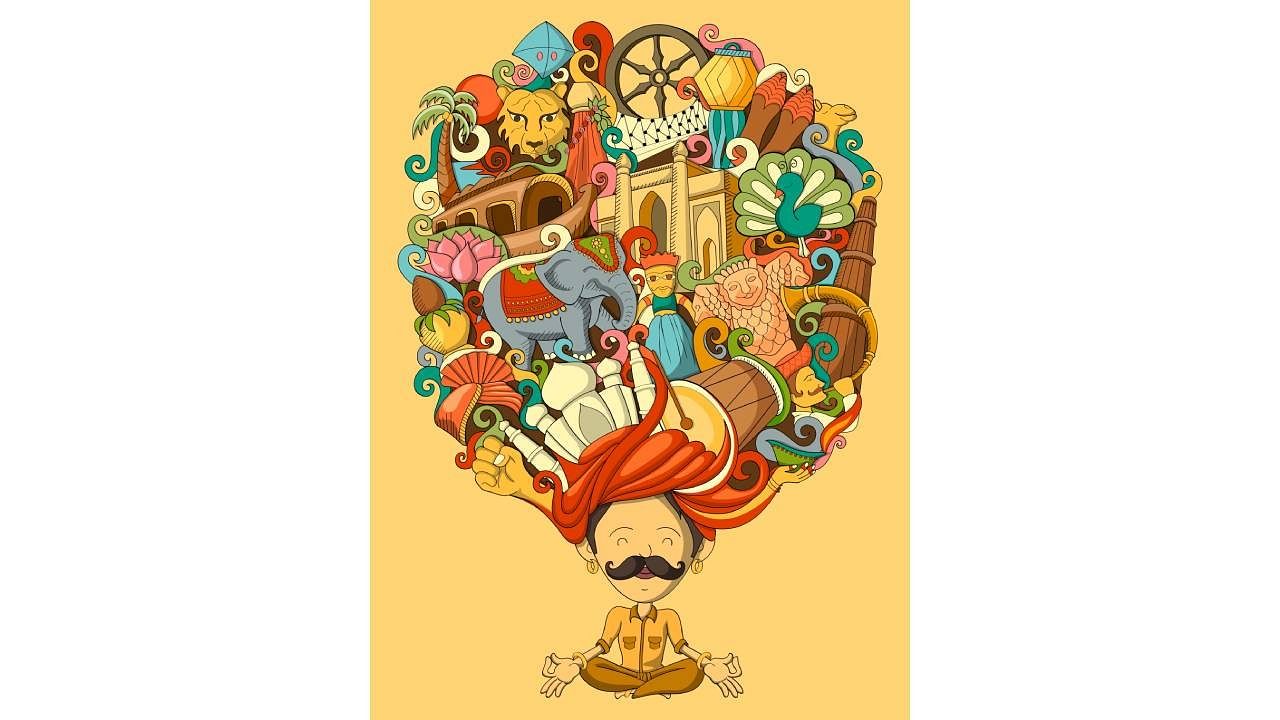
The stories in the collection are perceptive, reflective and symbolic of Indianness in all ways possible. (Pic for representational purpose only)
The Greatest Indian Stories Ever Told: Fifty Masterpieces from the Nineteenth Century to the Present has had a timely release with Independence Day on the horizon. "What makes the fifty stories in this volume the greatest Indian stories ever told?", asks Arunava Sinha — writer, translator, editor and academician — on behalf of the readers, as he introduces the collection. He goes on to explain what a short story is, what it means to be great and to be Indian. “Stories almost predate history," he writes and while India has a long, illustrious tradition of passing on oral tales, the anthology in question focuses on “the modern short story”.
A short, portable version of Indian literature or as Sinha likes to call it "literatures of India", the book assembles stories from 15 different regional languages (and some original Indian writing in English), such as Kashmiri, Rajasthani, Gujarati, Hindi, Marathi, Odia, Telugu, etc., These happen to be some of the finest short-form fiction to emerge out of India, since the 19th century.
Defying time and space
The stories defy the metrics of time and space, surrender the comforts of predictability and at the same time, grasp the complexities of the human condition. The volume features veterans like the Bengali maestro Rabindranath Tagore; R K Narayan, the celebrated creator of the Malgudi world; Orissa’s prodigious Gopinath Mohanty along with the “father of modern Odia prose”, Fakir Mohan Senapati; and Sarat Chand Chattopadhyay of Devdas and Parineeta fame.
The collection also flaunts terrific women writers, including Amrita Pritam, a “doyenne of Punjabi literature”; distinguished Hindi novelist, Mannu Bhandari; one of the earliest Urdu writers, Ismat Chughtai; Bengali writer and human rights activist, Mahasweta Devi; and Krishna Sobti, an advocate of feminist rights in Hindi literature. The book honours classic writers like the evergreen Munshi Premchand; Marathi writer and social reformer Anna Bhau Sathe; Malayalam writer and freedom fighter, Vaikom Muhammad Basheer; and Gujarat’s Dhumketu, whose works feature in Ratno Dholi. Finally, modern wordsmiths like the unafraid and unapologetic Sardar, Khushwant Singh; politician, columnist, critic and a powerhouse of quirks of the English language, Shashi Tharoor; Vivek Shanbhag, a renowned Kannada writer and a translator himself; and national favourite, Ruskin Bond, also make an appearance. There are many more, creating a bouquet of great Indian writers — the stars and the moons of the Indian literary scene.
The Greatest Indian Stories Ever Told preserves, through translation, the true inheritance of literature; or as Sinha accurately points out: “India is a country that lives in translation, as we constantly navigate a path between the language we are born with, the language we live in, and the language we go on to express ourselves in — which are often different than one another.” Bridging the decades between the writers and their readers, and minimising the natural gaps of language, geography and culture, 27 translators including Arshia Sattar, Shanta Gokhale, Rita Kothari, Kailash Kabir, Malini Seshadri, Neerja Mattoo, Poonam Saxena, among others, live up to the task. Their work is reassuring, despite the sense of loss that perpetually surrounds translated literature. From open-minded to often open-ended, the selected stories are perceptive, reflective and symbolic of Indianness in all ways possible, making for a special reading experience.
The Greatest Indian Stories Ever Told Arunava Sinha (Ed) Aleph pp 528 Rs 999
Rich reservoir
Ultimately, this short story collection is a treat for the soul with an appealing content list and a treat for the eyes as well with its handsome book cover. To the readers’ delight, the collection is representative but not exhaustive of the genre; meaning that if one craves more, there is much to be explored and discovered from the country’s literary reservoirs. Perhaps this is the beauty of the book — enhanced by the upcoming occasion — that it only shares a glimpse of the vastitude of Indian literature (especially the short stories) — each as diverse and rich as the region it comes from while also being symbolic of it.
The fundamental and final goal of literature — more accurately, of translated literature — is to bring societies closer, bind the past with the present, and connect one culture to another. The Greatest Indian Stories Ever is that perfect Independence Day read which opens the doors to Indian culture and literary talent for global readers who are keen to embrace the many wonders this nation has to offer.